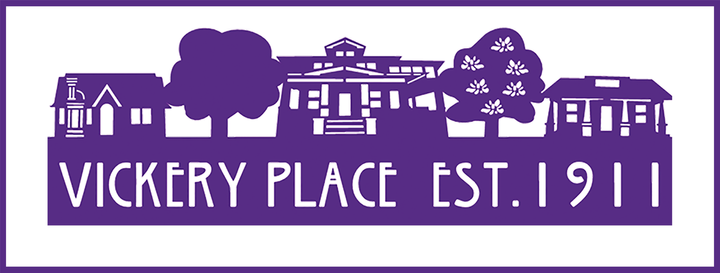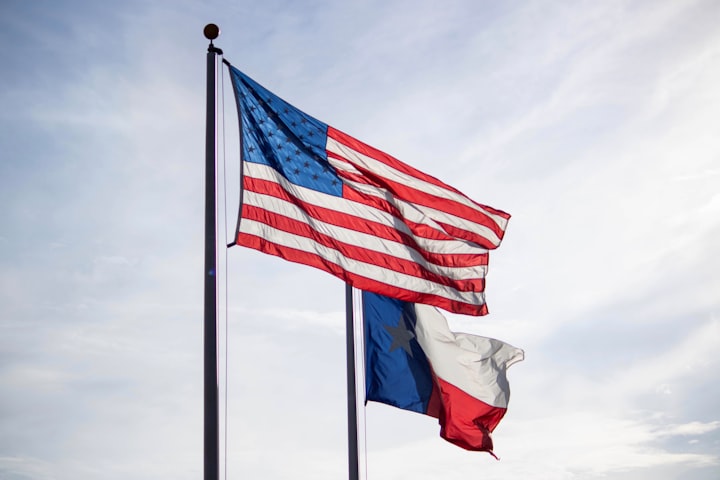Greenville Avenue
Greenville Avenue
Greenville Avenue has long been one of the most important arteries serving East Dallas and beyond. Along with Knox-Henderson, it forms the backbone of Vickery Place, and north through Greenland Hills (M-Streets) and up into North Eastern Dallas, and comes to an end right at the center of the hightech renaissance happening at the north end of Richardson. What may not be so well known is that Greenville Avenue used to be one of 4 major roads leading into Dallas, and in fact was the main route into Dallas from the North East coming in through Texarkana.
Before it was known as Greenville Avenue, this important route was called the "Richardson Pike" or "Richardson Road", and served the purpose of the North Central Expressway (US 75) today. The Richardson Pike Paralleled the Houston and Texas Central Railroad, which in turn was the original railroad into Dallas. The fight between the citizens of Dallas and the railroad that culminated in the construction of Central Avenue was a down and dirty brawl that lasted a good 30 years. During that time, the Richardson Pike, and then Greenville Ave became an important thoroughfare and entertainment / shopping district for the residential areas in East Dallas as well as Highland Park.
In the newspaper clipping below, dating from 1910, is a picture of the Pathfinder car which is essentially a scouting party searching for a reliable route for an automobile race or tour, such as the original AAA Glidden Tour. The route into Dallas from the North came in from Texarkana, through McKinney, Plano, Richardson and into Dallas via the Richardson Pike. Of course, all you have to do is spend a few lazy hours at the patio of the Blue Goose or Hurricane Grill to realize that Greenville Avenue is still the most important road in Dallas for car enthusiasts!

Below is a delightful hand drawn map with quaint annotations from the Dallas Morning News in July 1920. It outlines a suggested 3 hour leisure drive up the Richardson Pike, into Richardson, and across to Preston Road, with a fine drive through Highland Park and a visit to SMU.

Greenville Avenue has long been one of the most important arteries serving East Dallas and beyond. Along with Knox-Henderson, it forms the backbone of Vickery Place, and north through Greenland Hills (M-Streets) and up into North Eastern Dallas, and comes to an end right at the center of the hightech renaissance happening at the north end of Richardson. What may not be so well known is that Greenville Avenue used to be one of 4 major roads leading into Dallas, and in fact was the main route into Dallas from the North East coming in through Texarkana.
Before it was known as Greenville Avenue, this important route was called the "Richardson Pike" or "Richardson Road", and served the purpose of the North Central Expressway (US 75) today. The Richardson Pike Paralleled the Houston and Texas Central Railroad, which in turn was the original railroad into Dallas. The fight between the citizens of Dallas and the railroad that culminated in the construction of Central Avenue was a down and dirty brawl that lasted a good 30 years. During that time, the Richardson Pike, and then Greenville Ave became an important thoroughfare and entertainment / shopping district for the residential areas in East Dallas as well as Highland Park.
In the newspaper clipping below, dating from 1910, is a picture of the Pathfinder car which is essentially a scouting party searching for a reliable route for an automobile race or tour, such as the original AAA Glidden Tour. The route into Dallas from the North came in from Texarkana, through McKinney, Plano, Richardson and into Dallas via the Richardson Pike. Of course, all you have to do is spend a few lazy hours at the patio of the Blue Goose or Hurricane Grill to realize that Greenville Avenue is still the most important road in Dallas for car enthusiasts!

Below is a delightful hand drawn map with quaint annotations from the Dallas Morning News in July 1920. It outlines a suggested 3 hour leisure drive up the Richardson Pike, into Richardson, and across to Preston Road, with a fine drive through Highland Park and a visit to SMU.

Below is a story and series of photos about the paving of the Richardson Road north of Mockingbird Lane, in 1924. At this time, Vickery Place was quite established, and Greenland Hills was a recent addition.

Greenville Avenue has long been one of the most important arteries serving East Dallas and beyond. Along with Knox-Henderson, it forms the backbone of Vickery Place, and north through Greenland Hills (M-Streets) and up into North Eastern Dallas, and comes to an end right at the center of the hightech renaissance happening at the north end of Richardson. What may not be so well known is that Greenville Avenue used to be one of 4 major roads leading into Dallas, and in fact was the main route into Dallas from the North East coming in through Texarkana.
Before it was known as Greenville Avenue, this important route was called the "Richardson Pike" or "Richardson Road", and served the purpose of the North Central Expressway (US 75) today. The Richardson Pike Paralleled the Houston and Texas Central Railroad, which in turn was the original railroad into Dallas. The fight between the citizens of Dallas and the railroad that culminated in the construction of Central Avenue was a down and dirty brawl that lasted a good 30 years. During that time, the Richardson Pike, and then Greenville Ave became an important thoroughfare and entertainment / shopping district for the residential areas in East Dallas as well as Highland Park.
In the newspaper clipping below, dating from 1910, is a picture of the Pathfinder car which is essentially a scouting party searching for a reliable route for an automobile race or tour, such as the original AAA Glidden Tour. The route into Dallas from the North came in from Texarkana, through McKinney, Plano, Richardson and into Dallas via the Richardson Pike. Of course, all you have to do is spend a few lazy hours at the patio of the Blue Goose or Hurricane Grill to realize that Greenville Avenue is still the most important road in Dallas for car enthusiasts!

Below is a delightful hand drawn map with quaint annotations from the Dallas Morning News in July 1920. It outlines a suggested 3 hour leisure drive up the Richardson Pike, into Richardson, and across to Preston Road, with a fine drive through Highland Park and a visit to SMU.

Below is a story and series of photos about the paving of the Richardson Road north of Mockingbird Lane, in 1924. At this time, Vickery Place was quite established, and Greenland Hills was a recent addition.

The Arcadia Theater opened on November 4th, 1927, on Greenville Ave. On the next day, in the Dallas morning news, there was some excitement about the new theater, which included a Vitaphone! It was one of the first theaters in the country with this exciting new technology, enabling a sychronized soundtrack to be played alongside the movie. Unfortunately, an important part of Greenville's history was lost recently when the Arcadia Theater burned to the ground in 2006, as a total loss. And even more unfortunate is that the local neighborhood association sold the sign for a mere few thousand dollars, which is now no longer on Greenville Avenue, but can be seen nearby at the MADI Art Museum in Uptown.

Greenville Avenue has long been one of the most important arteries serving East Dallas and beyond. Along with Knox-Henderson, it forms the backbone of Vickery Place, and north through Greenland Hills (M-Streets) and up into North Eastern Dallas, and comes to an end right at the center of the hightech renaissance happening at the north end of Richardson. What may not be so well known is that Greenville Avenue used to be one of 4 major roads leading into Dallas, and in fact was the main route into Dallas from the North East coming in through Texarkana.
Before it was known as Greenville Avenue, this important route was called the "Richardson Pike" or "Richardson Road", and served the purpose of the North Central Expressway (US 75) today. The Richardson Pike Paralleled the Houston and Texas Central Railroad, which in turn was the original railroad into Dallas. The fight between the citizens of Dallas and the railroad that culminated in the construction of Central Avenue was a down and dirty brawl that lasted a good 30 years. During that time, the Richardson Pike, and then Greenville Ave became an important thoroughfare and entertainment / shopping district for the residential areas in East Dallas as well as Highland Park.
In the newspaper clipping below, dating from 1910, is a picture of the Pathfinder car which is essentially a scouting party searching for a reliable route for an automobile race or tour, such as the original AAA Glidden Tour. The route into Dallas from the North came in from Texarkana, through McKinney, Plano, Richardson and into Dallas via the Richardson Pike. Of course, all you have to do is spend a few lazy hours at the patio of the Blue Goose or Hurricane Grill to realize that Greenville Avenue is still the most important road in Dallas for car enthusiasts!

Below is a delightful hand drawn map with quaint annotations from the Dallas Morning News in July 1920. It outlines a suggested 3 hour leisure drive up the Richardson Pike, into Richardson, and across to Preston Road, with a fine drive through Highland Park and a visit to SMU.

Below is a story and series of photos about the paving of the Richardson Road north of Mockingbird Lane, in 1924. At this time, Vickery Place was quite established, and Greenland Hills was a recent addition.

The Arcadia Theater opened on November 4th, 1927, on Greenville Ave. On the next day, in the Dallas morning news, there was some excitement about the new theater, which included a Vitaphone! It was one of the first theaters in the country with this exciting new technology, enabling a sychronized soundtrack to be played alongside the movie. Unfortunately, an important part of Greenville's history was lost recently when the Arcadia Theater burned to the ground in 2006, as a total loss. And even more unfortunate is that the local neighborhood association sold the sign for a mere few thousand dollars, which is now no longer on Greenville Avenue, but can be seen nearby at the MADI Art Museum in Uptown.

Below is an aerial view of the important shopping district of Lower Greenville in the early 1930's.

The Granada Theater was built on Greenville Avenue in 1946, and was originally a movie house. Today, it is an important music venue. It has been wonderfully preserved, and still looks just like this illustration in a news story from 1946.

Greenville Avenue has long been one of the most important arteries serving East Dallas and beyond. Along with Knox-Henderson, it forms the backbone of Vickery Place, and north through Greenland Hills (M-Streets) and up into North Eastern Dallas, and comes to an end right at the center of the hightech renaissance happening at the north end of Richardson. What may not be so well known is that Greenville Avenue used to be one of 4 major roads leading into Dallas, and in fact was the main route into Dallas from the North East coming in through Texarkana.
Before it was known as Greenville Avenue, this important route was called the "Richardson Pike" or "Richardson Road", and served the purpose of the North Central Expressway (US 75) today. The Richardson Pike Paralleled the Houston and Texas Central Railroad, which in turn was the original railroad into Dallas. The fight between the citizens of Dallas and the railroad that culminated in the construction of Central Avenue was a down and dirty brawl that lasted a good 30 years. During that time, the Richardson Pike, and then Greenville Ave became an important thoroughfare and entertainment / shopping district for the residential areas in East Dallas as well as Highland Park.
In the newspaper clipping below, dating from 1910, is a picture of the Pathfinder car which is essentially a scouting party searching for a reliable route for an automobile race or tour, such as the original AAA Glidden Tour. The route into Dallas from the North came in from Texarkana, through McKinney, Plano, Richardson and into Dallas via the Richardson Pike. Of course, all you have to do is spend a few lazy hours at the patio of the Blue Goose or Hurricane Grill to realize that Greenville Avenue is still the most important road in Dallas for car enthusiasts!

Below is a delightful hand drawn map with quaint annotations from the Dallas Morning News in July 1920. It outlines a suggested 3 hour leisure drive up the Richardson Pike, into Richardson, and across to Preston Road, with a fine drive through Highland Park and a visit to SMU.

Below is a story and series of photos about the paving of the Richardson Road north of Mockingbird Lane, in 1924. At this time, Vickery Place was quite established, and Greenland Hills was a recent addition.

The Arcadia Theater opened on November 4th, 1927, on Greenville Ave. On the next day, in the Dallas morning news, there was some excitement about the new theater, which included a Vitaphone! It was one of the first theaters in the country with this exciting new technology, enabling a sychronized soundtrack to be played alongside the movie. Unfortunately, an important part of Greenville's history was lost recently when the Arcadia Theater burned to the ground in 2006, as a total loss. And even more unfortunate is that the local neighborhood association sold the sign for a mere few thousand dollars, which is now no longer on Greenville Avenue, but can be seen nearby at the MADI Art Museum in Uptown.

Below is an aerial view of the important shopping district of Lower Greenville in the early 1930's.

The Granada Theater was built on Greenville Avenue in 1946, and was originally a movie house. Today, it is an important music venue. It has been wonderfully preserved, and still looks just like this illustration in a news story from 1946.

Fire on Greenville in Spring of 2010










Comments ()